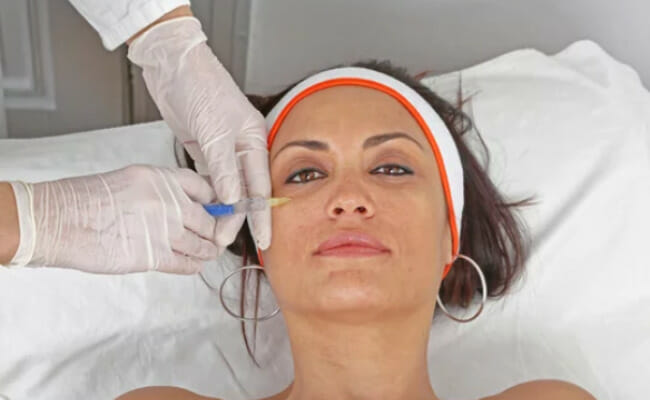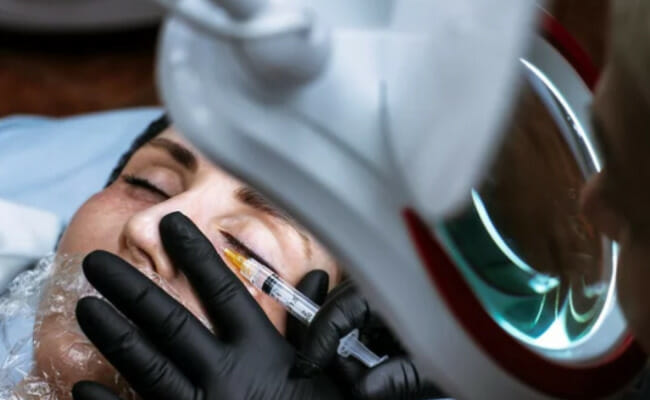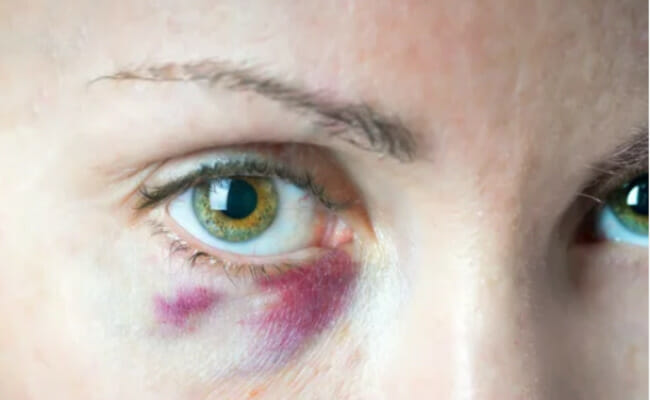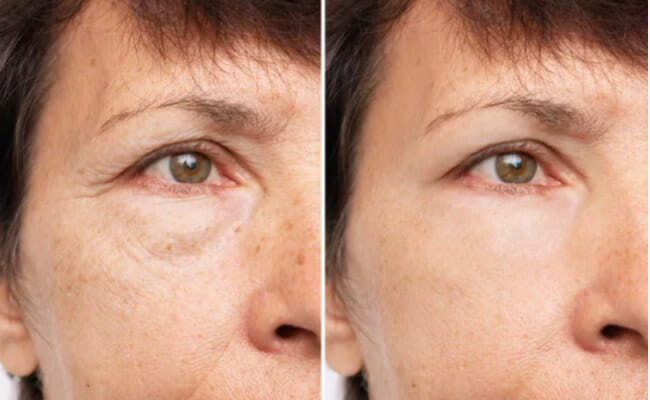Under Eye Filler: What You Need to Know
Mild swelling or puffiness under the eye is expected as you age. The skin immediately below a person’s eye can accumulate fluid. It appears when the tissue around your eyes weakens, including some of the muscles supporting your eyelid. Getting an eye filler might be your solution to avoid sagging skin around your eye area.
This sagging of the skin often results from temporary conditions and can be some combination of chronic stress, poor diet, lack of sleep, and fatigue resulting from illness or medications, for example. Some who often have a bigger problem with bags under the eye are those who suffer from allergies and sensitivities.
You don’t need to be bothered because, in this post, you’ll learn everything you need to know about Under Eye Filler which is one of the solutions for bags under the eye.
What is Under Eye Filler?

Under-eye filler, also known as a dermal filler, is a hyaluronic acid injection used to decrease and better the appearance of sunken or discolored under-eye areas. Dermatologists extended its use near and far, designed for cheeks, lips, and hands, having the ability to reverse dark circles and bags completely.
Understand if Under Eye Filler Can Solve Your Concern
Under Eye Filler is an exceptionally famous facial rejuvenation injectable intended to deliver your ultimate under-eye goals. It works best for volume loss under your eyes, but in some cases, you can also use it to treat puffy bags, known as the pseudogenization of orbital fat.
With the explanation above, you might think that Under Eye Filler is a universal solution for common aesthetic eye concerns. Though the treatment can be effective for the right person, it is not for everyone, just like every other cosmetic procedure, and is not a singular solution for all under-eye concerns. Under-eye filler is just one potential option to solve your problem.
According to Michele Green, MD, a board-certified dermatologist in New York City, “The tissue structures supporting the eyelids weaken from aging or genetics, and this weakening causes a hollowness and sagging of the skin in the under eye area, but hyaluronic acid fillers replenish volume to the area.”
Dark circles, which sometimes expand from volume loss in the lower eyelid fat pads, can be lightened through the assistance of developing hollows and decreasing shadows beneath the eye. Under Eye Filler is a great way to brighten the eye when injected well.
It reduces hollowness and that tired appearance from some of the tissue underneath the eye. Know that they are not permanent and they won’t address some concerns. The critical step you should take should be talking to a doctor about the results you’re hoping for.
Do Your Research on Medical Professional
Doing research and choosing an experienced, board-certified dermatologist or plastic surgeon to perform this procedure would help.
Less-qualified practitioners or dermatologists can cause serious side effects to occur. Such issues may include over-injection, incorrect placement, discoloration, asymmetrical injection, or the formation of lumps.
Be aware that not everyone wielding a needle is well-versed in the procedure, and try to choose an experienced dermatologist.
Do Your Research on the Procedure/Cost
Having researched the medical professionals, your doctor will walk you through the procedure and recovery process. And more research is needed. Research has it that the following procedures must take place:
Your doctor will sterilize the already ticked area where the injection will occur with cleansing fluid. They’ll apply numbing cream to the site and let it absorb into the skin for a few minutes.
Your doctor will make use of a small needle to pierce your skin. Sometimes, they inject the filler through the needle into the area. And in other instances, a blunt-edged cannula containing the filler, made by the needle, will be inserted into the hole.
You’ll require one or more injections under each eye. If you opt for linear threading, your doctor will inject filler into the site as the needle is slowly withdrawn and would mellow the filler into place.
During this procedure, many don’t feel pain. You need to do research about the procedure and know how it works. Any health insurance plan does not cover eye fillers because it’s a cosmetic procedure. Its costs can also vary; be aware before using it.
The Side Effects of Getting Eye Fillers
Just like many other types of face filler, under-eye fillers have side effects. Under-eye rejuvenation may not be suitable for every patient because the eyelid skin and adjacent face parts are so delicate.
Due to the tender and complex anatomy around the eyes, it’s essential to choose the right practitioner or surgeon to give you under-eye fillers. However, you’ll experience some temporary side effects and complications, no matter how skilled your dermatologist is.
Bruising is one of the most common adverse effects of hyaluronic acid injections. In dermal fillers, Hyaluronic acid is a common ingredient present in dermal fillers or under-eye fillers.
Another is swelling, which can result in an unnatural appearance. It can be highly upsetting. There is also a chance that the therapy will produce darker patches of skin because of how the skin reacts to trauma.
The above are some side effects of under-eye or dermal fillers. It is also necessary to know what kind of fillers you are getting.
What Fillers You’re Getting
Not all dermal fillers are the same. Some common ones contain hyaluronic acids, including Juvederm, Restylane, and Perlane. This naturally-occurring substance helps shape and hydrate the skin.
Other fillers include collagen-stimulating substances like calcium hydroxylapatite (Radiesse) and synthetic collagen replacements like polymethyl-methacrylate microspheres (Bellafill), polylactic acid (Sculptra), and polyalkylimide (Aquamid).
Getting the best dermal filler right for you will depend on your medical history and specific preferences and needs.
How Long It Lasts
Dr. Sapna Palep of Spring Street Dermatology explained that some dermal fillers last between 6 to 12 months, while others can last between 2 to 5 years. Palep went as far as sharing the longevity timelines for some of the most popular brands of dermal fillers, including Sculptra, Restylane, Juvederm, and Radiesse.
There are different kinds of Juvederm, but Juvederm Voluma lasts 24 months, with a touch-up treatment halfway in to help with longevity. She also illustrated that Sculptra Can last more than 24 months while Radiesse lasts for approximately 12 months.
Restylane varies, whereas Restylane Defyne, Refyne, and Lyft last for about 12 months, with a possible touch-up at 6–9 months. Restylane Silk lasts approximately 6–10 months, while Restylane-L lasts around 5–7 months.
The Reversal Process
There are situations where you are not happy with the results, where dermal fillers have produced an undesired or harmful result, or where you have experienced any of the side effects.
Then you can consider reversing your dermal fillers. Your healthcare professional injects a reversal agent called Hyaluronidase into the skin to dissolve the filler. It is a safe and comfortable procedure or process that can correct issues or effects caused by dermal fillers.
A thorough consultation is essential before undergoing a filler reversal procedure because there is a risk of allergy, like any other medication.
Proper After-Care of Eye Fillers
There is a need for you to take proper care of the eye after treatment. In the first hour of treatment, swelling, redness, tenderness, bruising, and itching may occur near the injection site.
It is normal and generally disappears within a few hours or days after the treatment. You should avoid massaging, itching, or picking around the injection site as much as possible.
As part of your after-care, you will probably be provided by your doctor or dermatologists with ice, arnica cream and tablets, and bromelain tablets. All of these can reduce or resolve potential bruising. And if at all you feel any pain, you may take acetaminophen (Tylenol) to reduce the pain as necessary.
Follow Up Appointment
Follow up appointment is something your doctor must make. They should be able to recommend a follow-up appointment a few days after the treatment to check out the treated area.
The doctor also determines whether another or an additional filler injection is necessary for the treated area. Follow-up is good, and your doctor will make any necessary adjustments in this process. You can do it every two weeks or at the time given by the doctor.
Conclusion
Though under-eye filler is not a miracle solution, it can work wonders. It is a temporary treatment for bags or wrinkles under the eyes and dark circles. Most people even use it to look younger (especially women) because it diminishes the most common signs of aging when used correctly. Above all, getting not just anyone who injects or uses injections but experienced dermatologists is very important to reduce the risk or chances.




